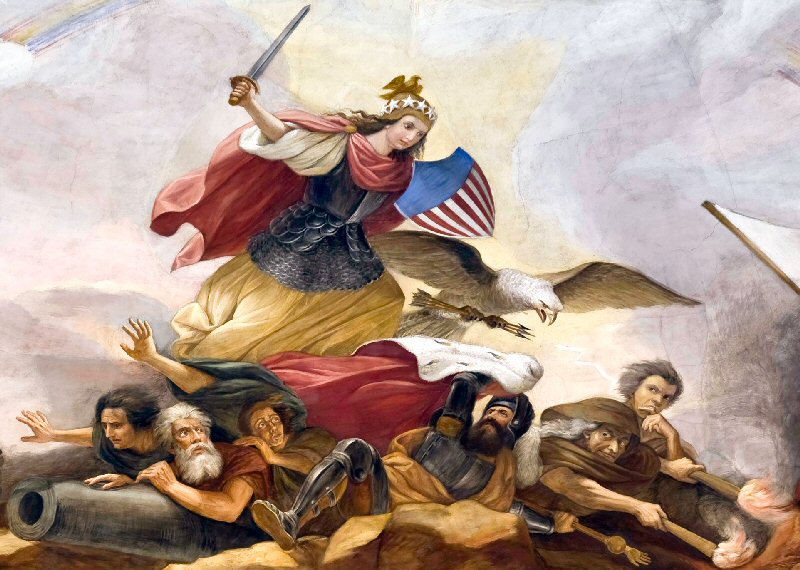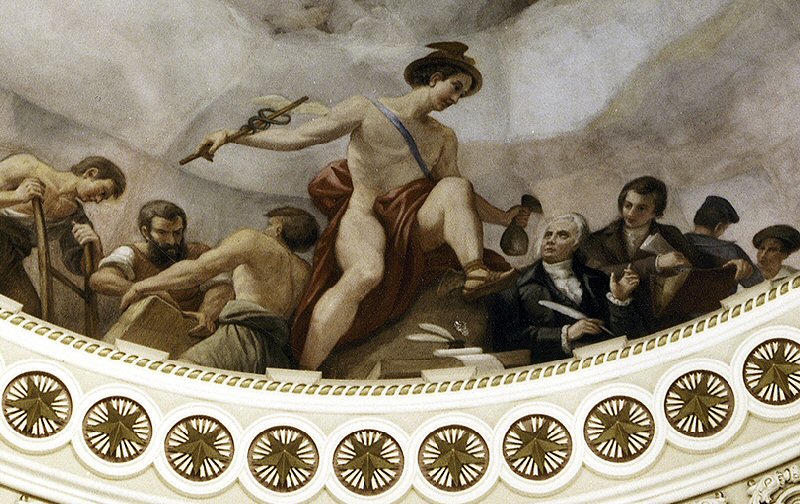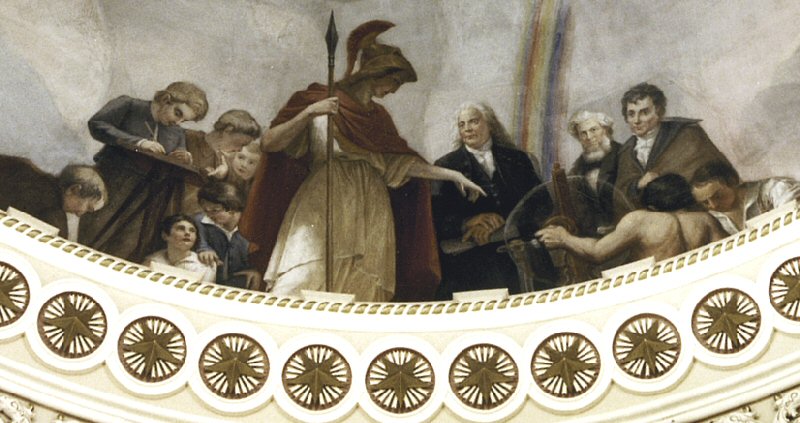


And
here, the Goddess Immaculately Conceived, the Dreadnaught Mary.
Wearing the pentagrams and eagle headdress of Thomas
Crawford’s statue atop the dome’s exterior, she mobilizes
her sword and shield against a pack of fleeing sinners
labeled “Tyranny” and “Kingly Power.” Jupiter’s
mascot, the Roman eagle,
glides just behind her clutching a bunch of thunderbolts
in his talons. Innocent in her flowing scarlet cape, the
Goddess is situated exactly beneath the deified George
Washington, coming between him and the embattled viewing
public gazing up from ground level. It is the graphic
realization of Pio Nono’s Ubi primum, which decreed the Virgin Mary was “set
up between Christ and his Church, always delivering the
Christian people from their greatest calamities and from
the snares and assaults of all their enemies.”
The
eagle gliding behind Mary explains the otherwise
inscrutable seal of the United States Justice Department,
which contains a wingspread eagle surrounded by the motto
“QUI PRO DOMINA JUSTITIA SEQUITUR” (“He who follows the
Goddess Justice”). Persephone, or Minerva the
Mediatrix, when judging the sinfully dead in Hades
was called Justitia, or Justice. The “HE” of the Justice
Department’s motto identifies
the eagle, symbol of Rome. Rome follows the
Goddess Justice – that is, the Immaculately Conceived Mother of God in her
judicial capacity.

Young America’s Smurf-cap is a style of headgear known as the “Phrygian cap.” Phrygia was a district in the Kingdom of Per gamum. We remember Pergamum. It was the middle point in the transfer of Babylonian religion westward to Rome. Phrygia is a Greek word meaning “freemen” (our English word “free” comes from the first syllable, “phry-”). Phrygian caps were given to freed Roman slaves to indicate their new liberated status. Roman law regards liberty as a conditional status. Once granted by a patron, it could be revoked at any time for cause. Phrygian-cap freedom, then, means liberty (freed Roman slaves, by the way, were called “liberti”) to please Caesar. We remember from Chapter 8 how Ignatius described such freedom in Section 353.1 of his Exercises: “We must put aside all judgment of our own, and keep the mind ever ready and prompt to obey in all things the hierarchical Church.” Of course, those liberti bold enough to protest what their superiors commanded lost their freedom, no matter how lucid and reasonable their own judgment might have been. They were reverted to slavery. Since the advent of the Febronian State Church, the reversion of protestant liberti, or Protestants, to slavery has been so methodically insidious that it’s hardly noticeable. The shackles are psychological, humanely fitted by increasing varieties of spiritual exercise. Like Aeneas, Anchises, Julius Ascanius and their Trojan followers, most Americans are indeed Phrygiancap freemen, free to sacrifice their individuality to the greater glory of Rome.

